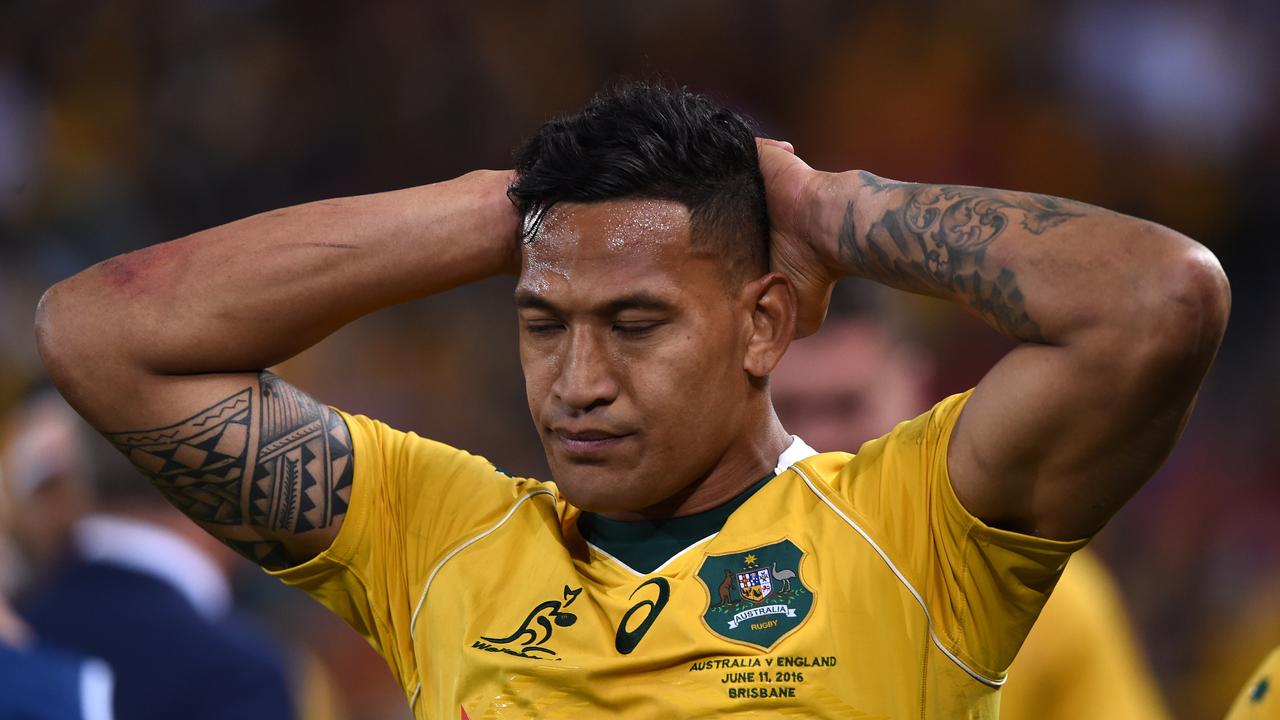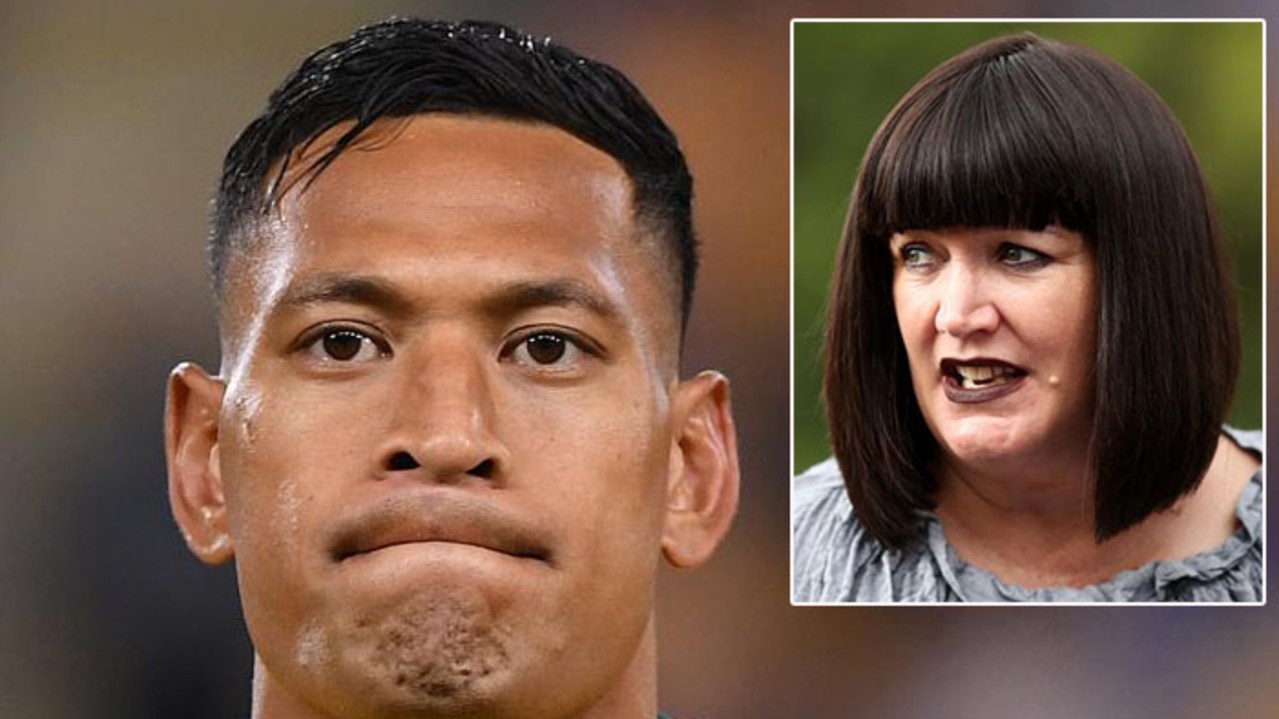RWC 2015: As in 1984, Wallabies scrum must stand up to Welsh
It’s a moment etched in time, the pushover try against Wales at Cardiff Arms Park in the 1984 Grand slam tour.
It’s a moment etched in time, one of the most defining moments in the history of Australian rugby, the pushover try against Wales at Cardiff Arms Park during the 1984 Grand Slam tour.
Before that try, that tour, Wales had historically held the whip hand over Australia, winning seven of the 11 Tests played. Two of their rare defeats came in their acrimonious Down Under campaign in 1978 that nearly severed relations between the two countries.
In short, the Welsh felt that they had been lured into a back alley and mugged, though I seem to recall JJ Williams slippering Paddy Batch in the head as he lay on the ground at Ballymore. When I asked their manager, Clive Rowlands, about it at what passed for a press conference but was in fact a Welsh bleating session, he gave the impressively agile answer that Australian spectators tend to stand up when they get excited and he hadn’t seen a thing.
Yet despite the weighty historical preamble to the pushover try, there was scarcely any actual build-up to it on the field. Roger Gould had put up the bomb, no one was at home for Wales but it bounced fortuitously for them. The Wallabies poured through, sealing off the ball. Scrum Australia.
There was no posturing before scrums in those days. Scarcely had the referee signalled the Australian feed than the Wallabies’ front row of Andy McIntyre, Tom Lawton and Topo Rodriguez linked arms and moved smartly forward. Perhaps that was because there was no “crouch, bind, set” in those days. You prepared speedily for the scrum or you lost the hit.
So, in retrospect, it all happened quite quickly, though in my mind’s eye it’s recorded in slow-mo. Curiously, the Welsh scrum doesn’t fragment. Their discipline in staying together is actually quite impressive. But they are powerless to resist as the Australian scrum marches over the tryline for No 8 Steve Tuynman to score. Yet had it not been for hooker Tom Lawton fist-pumping the air, the try would almost have passed uncelebrated.
That took the score to 17-3 so, in reality, it wasn’t pivotal to the victory at all. The Wallabies would have won without it, and handsomely. And yet that Test is forever remembered because of it. It was as though Australian rugby had taken a stand that day, literally.
As Wales approach tomorrow’s 2.45am (AEDT) top-of-the-pool showdown with Australia at Twickenham, they are utterly fixated on the 10 successive defeats they have suffered at the hands of the Wallabies but that is only a glimpse of the whole. Since that day at Cardiff Arms Park there have been 27 Australia-Wales Tests and the men in gold have lost only three of them.
Curiously, Dragons coach Warren Gatland has dropped the most capped player in Welsh history, loosehead Gethin Jenkins, for this match, this despite the fact he was a member of the last Wales side to defeat Australia, in 2008.
But for perhaps the first time since that long ago Grand Slam match, Wales go into a Test against the Wallabies expecting the worst in the scrum and Gatland has called Paul James and Samson Lee into the front row to join hooker Scott Baldwin in the hope of shoring up the set piece. Whether they can turn the tide, given England cleaned up the Welsh scrum a fortnight ago, remains to be seen. But clearly Gatland had to make changes. He couldn’t stay with what he had.
Gatland’s moves are being studied avidly in the Wallabies camp. Michael Cheika has hailed him as “a genius coach” and from the looks of it, there is no sarcasm intended. Interesting that Cheika was able to nominate how Gatland completely changed his defensive system for the first Test of the British and Irish Lions tour of Australia in 2013. For a man who supposedly gives little heed to the opposition, it was an insightful thing to say.
“He’ll set you up and try to sit you down,” Cheika said of his counterpart. “So we’ve got to not make too many plans that focus on the opposition.”
That’s a good thing, too, because Gatland has spoken breezily this week of how relieved Wales are to be going through to the quarters and how he wants his players to celebrate by playing with freedom and style against the Aussies.
But look at his selections — two blockbuster centres in Jamie Roberts and George North, direct, hard runners both; two fetchers in Sam Warburton and Justin Tupiric to counter David Pocock and Sean McMahon head-on and slow down the Australian ball; and a second-row pairing of Luke Charteris, all 206cm of him, and veteran Alan Wyn Jones whose mission is clearly to dominate the Wallabies’ lineout. So the Wallabies would be wise to pay no heed to Gatland’s talk of being fast and loose, when the team he has selected would seem to suggest he has the very opposite on his mind.
Interesting that Gatland has chosen to attack Australia at the lineout. If there was a solitary flaw in the Wallabies game against England, this was it, and Charteris and Wyn Jones formed a deadly locking combination in the Six Nations. Indeed, if there is an area where Wales are strong, it is in their back five in the scrum.
All eyes will be on Pocock, who is fast overtaking Israel Folau as the most recognised rugby player in the Wallabies, but spare a moment to observe McMahon, for chances are you won’t get another viewing at this World Cup. When Michael Hooper returns from suspension, he surely will make way for him but McMahon arguably has more aggression per kilo than any player who has ever represented Australia.
Cheika claims his side generated no momentum in beating England. They did, though it’s understandable he doesn’t want them to hear that, or indeed the enemy. But the Wallabies made a statement last weekend. They are playing, at present, the best rugby of any team at the World Cup. But this is only the fourth match and they award the Webb Ellis Cup after the seventh.
Like the Wallabies of 1984, they took a stand, a brave one. But it’s what they do now that counts. South Africa or Scotland await in the quarter-finals. They went the South African route in the 2011 tournament and escaped with one of the luckiest wins in Wallaby history. Besides, their reward then was a meeting with the All Blacks, who again would be Australia’s semi-final rivals this time.
No, far better to beat Wales and play Scotland in the quarters. Who knows, if they beat them and Ireland win Pool D and then beat Argentina in their quarter-final, Australia might just have the chance to complete its first Grand Slam since the one and original.



To join the conversation, please log in. Don't have an account? Register
Join the conversation, you are commenting as Logout